After a recent tour of the south-west forests during our travels around Australia, I saw karri forests chocked with fuels and I wanted to write about fire management, or lack of. I struggled, however, to conjure the words that would convey the essence of the problem. I realised that no matter how much I tried, I didn’t have “the sap of karri trees running through my veins”. I have never worked in these forests. I haven’t been saddled with the responsibility of protecting assets and lives by carrying out a managed burn or fighting a fierce wildfire in the unique and special karri forests.
But luckily, I found an article hidden in my professional library that does convey the message much better than I ever could.
It was a speech given by Roger Underwood to a packed public meeting at Pemberton in March 2015. He was talking to people who literally live in the karri forests. The settlements and towns are enclosed by a large contiguous belt of forest. A fair proportion are the magnificent, tall and wet karri forests.
The speech was immediately after the massive Northcliffe bushfire tore through the heart of Western Australia’s karri country. The fire started by lightning in the Shannon National Park between Manjimup and Walpole, and was so hot it melted the tarmac on the South West Highway. Five days later, all 400 residents of the town of Northcliffe in Western Australia were urged to evacuate as the fire threatened the town. Aside from destroying two houses and several sheds, the blaze burnt more than 98,000 hectares of the state’s most scenic country, which included 5,000 hectares of young karri regrowth. It is one of the largest karri fires since European settlement, and certainly the biggest since the 1950s.
Roger is a retired professional forester who worked as a firefighter and bushfire specialist in the karri country from 1961 to 1980. For nine years he was the District Forest Officer or Forest Officer in Charge of the Pemberton, Shannon River and Northcliffe forests. He is currently Chairman of The Bushfire Front, a group of professional bushfire scientists and specialists dedicated to tackling the bushfire crisis in WA.
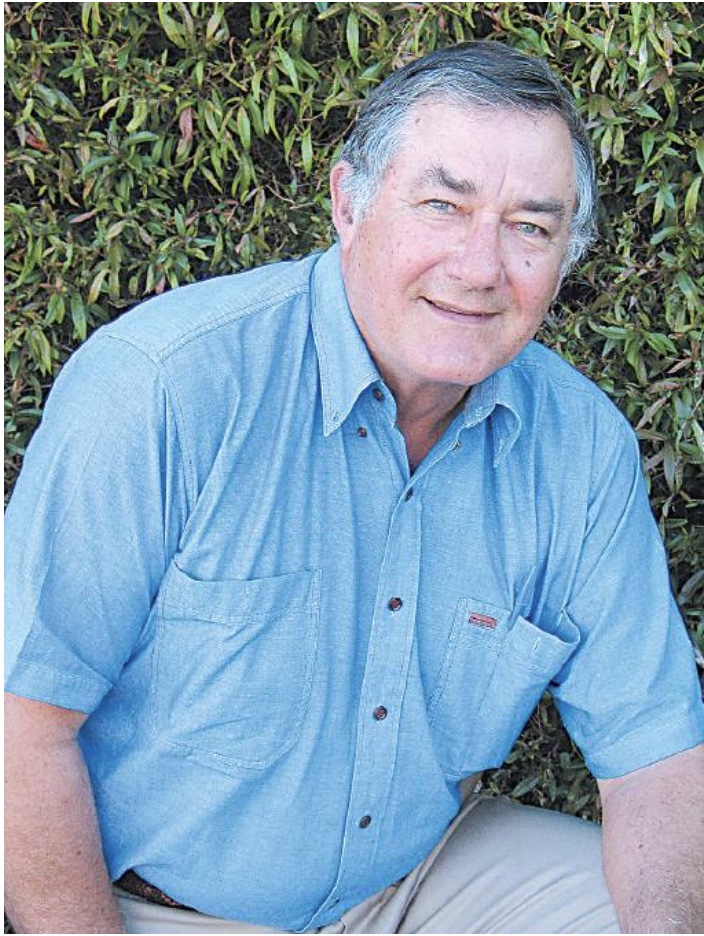
Roger’s main lament is the lack of priority and focus given to prescribed burns. From the mid-1990s, successive governments have failed to address the dangerously high fuel levels in the south-west forests. In the five years prior to 2015, more houses were destroyed by bushfires than in the previous 30 years. From 1999 to 2015, The Department of Fire and Emergency Services (DFES) saw its annual budget increase by 1,181 per cent to $366 million. Yet, one year later, the entire town of Yarloop was wiped out in a bushfire. As Roger says, it doesn’t make sense to spend millions of dollars unsuccessfully trying to suppress wildfires, when you can spend a quarter of this on managing fuel loads, making wildfires easier, safer and cheaper to suppress, and minimising the damage they cause.
I am sure after reading Roger’s talk, you will not be surprised to hear that he received a standing ovation. The state’s Hansard has numerous mentions of his name in the months following his speech. While Roger tells me that some good things did eventuate following his talk, and the department has a far more sensible approach these days than it did back then, there are still problems. Departmental staff have their hearts in the right place, and are doing their best, but the karri forest region is grossly understaffed and financially under-resourced, and the situation is getting worse year by year. Political support is also fragile. For instance, the government recently gave in to a protest from green activists and “postponed” (probably cancelled) a proposed burn near Walpole.
I visited several karri forests in the south-west in late 2021 and early 2022 and it seems not a lot has changed since Roger’s talk. While I saw some prescribed burning, fuel loads were still high in many areas and a lot more burning needs to be carried out. For instance, I had an enjoyable drive through Boranup Forest, but it carried too much fuel. Most of this area was converted from State forest to National Park many years ago, and at the same time the prescribed burning program basically came to a halt. I knew when a fire started, the whole forest would burn fiercely. Sadly, four days after my visit, that is exactly what happened after a wildfire ripped through the forest.
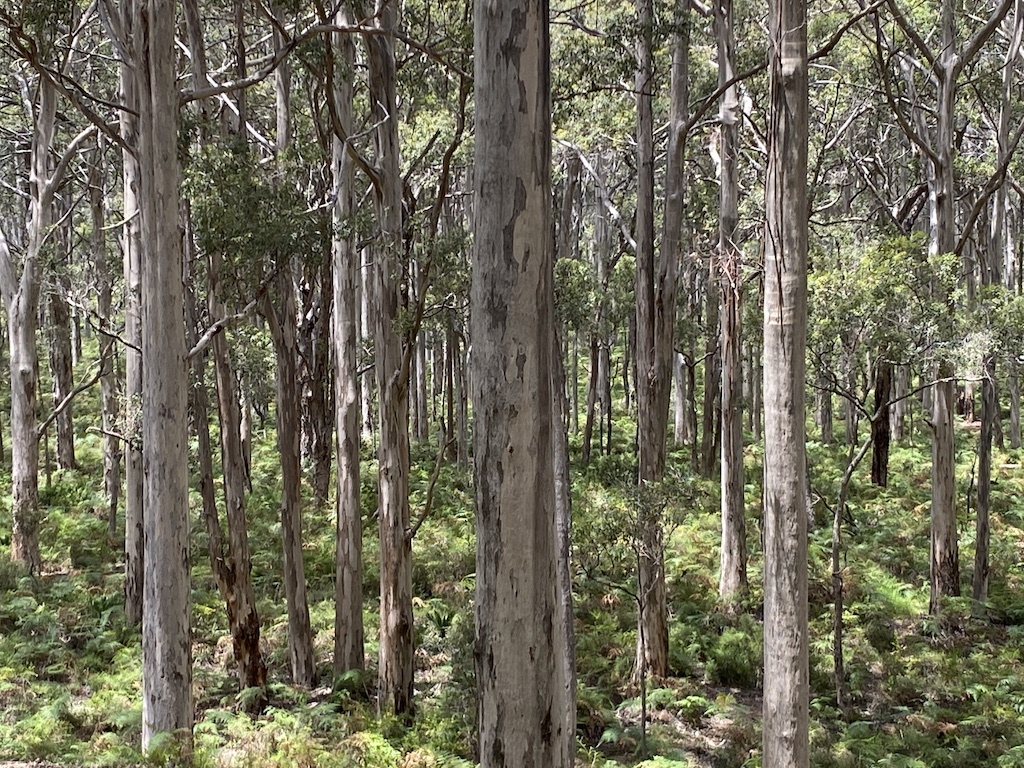
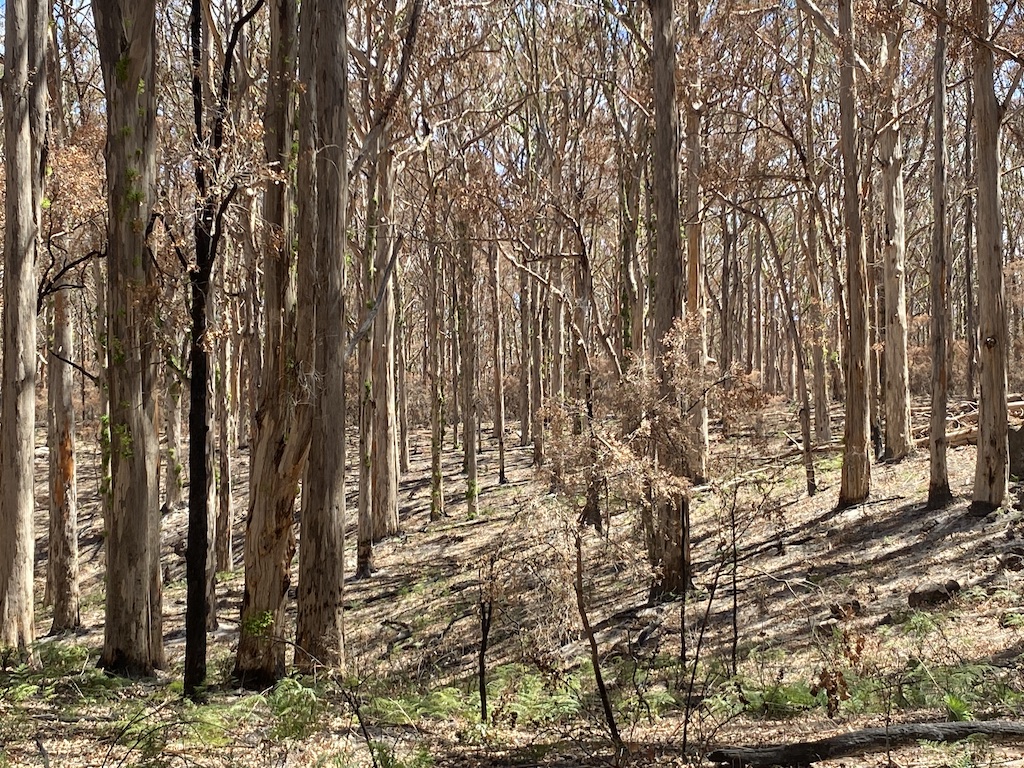
Here is Roger’s speech in full:
Looking out in this familiar setting, I see many people I know. Some of you will remember the last time I stood on this spot, the night Southerners won the 1964 Grand Final, and I sang “Moon River”!
Well, I won’t be singing tonight. This is an occasion for tears not celebration. We are here to discuss one of the greatest follies in the history of land management in WA: the decline of the wonderful system of bushfire management we once had in the karri country.
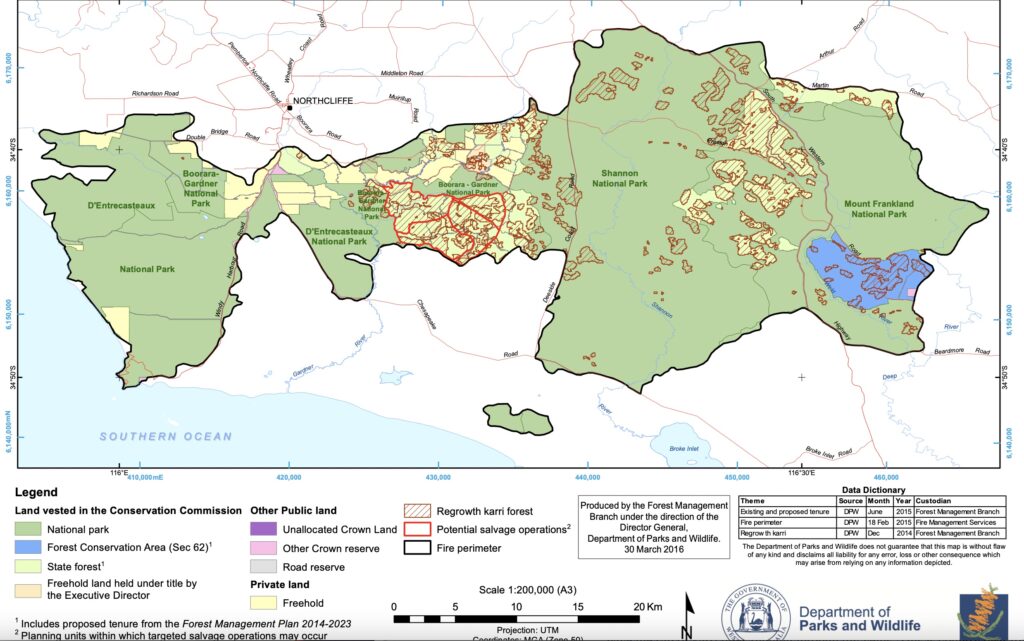
Yes, I am down from the city for this meeting, but I hope you won’t regard me as a fly-in-fly-outer. I still have the sap of karri trees running through my veins. This is country dear to my heart, it is country that speaks to my soul. I weep for what has happened to the forest and to the community, but I weep harder because I know that what is still to come is going to be even worse.
Unless things change.
I was a tree-hugger in the karri country once, years before that term was invented. I hugged karri trees as a loving father hugs his children – in the full knowledge that forests are born, grow up, and need looking after…and they will reward you if you care for them, but punish you if you don’t.
There are two sorts of people who claim to love the karri country. First there are those who only visit, the way they visit a museum. Second there are the people who live here. They know they are not living in a museum, a picture postcard landscape of rolling hillsides, lakes, farms, beautiful forests, timber towns. In this real world people live, work, and play. The people who live here know that if their lives, livelihoods and landscapes are to survive, then the environment must be managed. They know that if the forces of nature are let off the leash they will be in trouble. And if they didn’t know, or became complacent, then the events of February 2015 are a stark reminder.
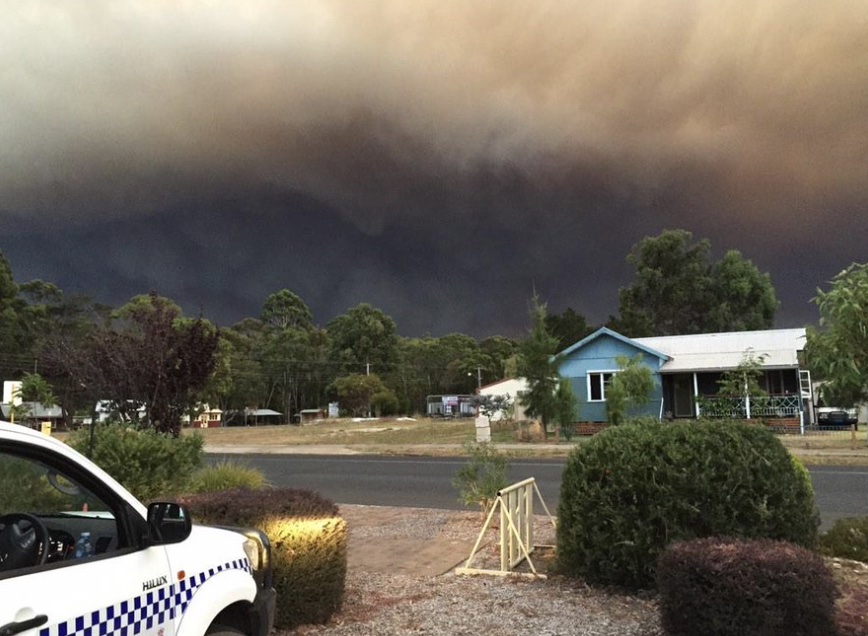
The greatest natural force that must be kept on the leash is fire. The green and often damp bushland of the karri country can be deceptive to a visitor. The rest of us know that it dries out every year. Given the wrong set of circumstances, it will burn. And it will burn hard. Those circumstances are a coincidence of drought, high temperatures, strong winds and lightning strikes. Like a disease outbreak, they coincide in the south-west of Western Australia nearly every summer. If preventative medicine has not been applied, the result is a bushfire calamity.
When you have seen a karri crown fire, with a nor’wester up it, the flames exploding out of the tops of the trees, spot fires lighting-up from a down-wind ember stream, burning with the intensity of an atom bomb, when you have seen this … you know two things: first, no firefighting force on earth is going to stop it; and second that there will be enormous damage and multi-millions of dollars lost.
Even if you haven’t seen a bad fire in the karri country, you should know about them. Local history has not forgotten the great fires of the 1930s that took out Nornalup and Denmark; the unstoppable fires in the Shannon and along the Chesapeake in the 1950s; the fire that destroyed Karridale in March 1961; the Crowea Fire that started the same summer just south of Pemberton and burnt into the sea near Windy Harbour; the Boorara Fire of 1969 that burned from Northcliffe to Crystal Springs; and the Muirillup fire of 1970 that threatened towns and blackened beautiful forests.
I especially remember the 1969 fires. They were a watershed in karri country bushfire management. This was the revolution that gave us thirty years of freedom from bushfire damage, and a fire prevention system so effective and so efficient that we became world famous. In those years I can remember streams of visitors from the eastern states, the USA, Canada and from Mediterranean countries coming to Pemberton to see what we were doing and how they could learn from us.
A lot of changes were made after the 1969 fires, but the “secret ingredient”, if you like, was the fuel reduction program. The penny had dropped. We knew bushfires will always start. But you have choice: mild-intensity fire at the time of your choosing, or a raging wildfire at the worst possible time. We chose the former. Using aircraft, we used to burn the State forests and national parks every 6-8 years, with low-intensity fires under mild weather conditions, according to a carefully designed schedule. A 6-8 year burning program meant that at any time 40-50 per cent of the forest was carrying 0-3 year old fuels. Bushfires still occurred, as they always will, but the light fuel areas gave us an opportunity to catch them with relative ease and safety, especially at night. They also helped to protect residential areas and farms by reducing the risk of a wildfire driving in from the hinterland and piercing the hearts of our towns.
I often recall the Cyclone Alby bushfire crisis in 1978. Even under the most extreme weather conditions, we were able to control numerous fires because mostly they were burning in light fuels. Unfortunately this is history. During the 1990s, people who did not know the karri country, or who thought they knew better, got control of the system and things started to go off the rails. Two very foolish ideas took hold.
The first was the idea that if you have enough firefighters and water bombers you don’t have to worry about bushfires – “we’ll just wait around and if a fire starts we’ll bomb it out” I was told by a senior man in FESA (now DFES) a few years ago.
The second was the idea that fuel reduction burning created more problems than it solved. The greenies claimed it was destroying the environment. Academics at Murdoch University claimed it provided no advantage in controlling wildfires.
Unfortunately successive governments bought these disastrous and foolish ideas, and the effective system developed during the 1960s and 1970s was derailed.
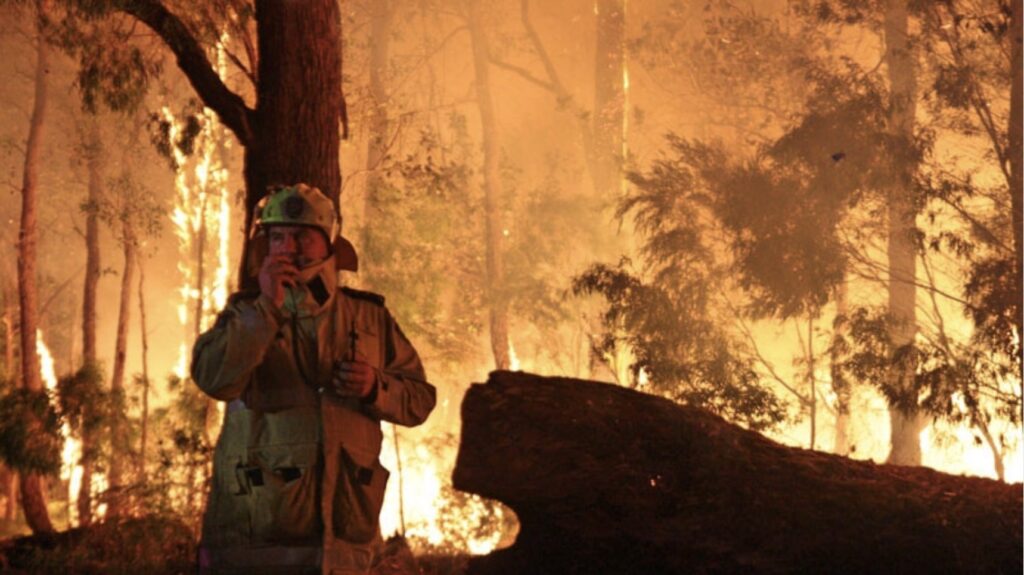
There has been little fuel reduction burning in karri forests for years now. This means that the fuels have built up and when fires do occur, they are unstoppable. This has left the forest vulnerable, and also the communities who live and work in it. The town of Pemberton itself would be wiped off the face of the earth if a crown fire drove in from the north or the east on a bad day. Ten thousand firefighters and five hundred water bombers would not save it.
The Bushfire Front has complained about this for years now, but the response was excuse after excuse after excuse. The burning cannot be done because it is too wet, or its too dry, or its too hot, or too cool or it was a wet winter, or it was a dry winter. It can’t be done because the smoke will taint the wine or drift into the city. The Doctor’s Wives in Cottesloe or Subiaco will protest, or there isn’t enough money, or the staff are all away fighting fires in pastoral country up in the Murchison, and anyway the experts at Murdoch University tell us it has no value in wildfire control.
And it’s not just the government. Our bushfire brigades have also stopped burning, because their confidence has been undermined, and the authorities have made it so difficult to get a permit, that they are discouraged.
We have given warning after warning, until we sound like a broken record. We have met with Premiers, Ministers and senior bureaucrats, and written dozens of letters and submissions. We have said “get your bushfire management sorted out, or you will lose everything”, but instead of getting better, things on the ground just kept getting worse.
Let me be clear about one thing: I do not blame the local staff of DPaW (Department of Parks and Wildlife), whose hearts are in the right place. What I blame is the system that has been put in place to frustrate and deny them. This system puts up so many barriers, so many constraints and so many bureaucratic hurdles, that they cannot get the job done. They are also spread very thin. Today there are fewer foresters to look after the forest, and they have a vastly bigger area to look after, than was the case when I worked at Pemberton in the 1960s, and the ranks of the “forest workmen”, as we used to call them, have been decimated.
The current bushfire approach must be changed. I have been told that the department’s priorities for the karri forest are to provide visitor facilities and protect biodiversity. But any primary school child will see that if huge, ugly bushfires are not first prevented, neither the wildlife nor the picnic spots will survive.
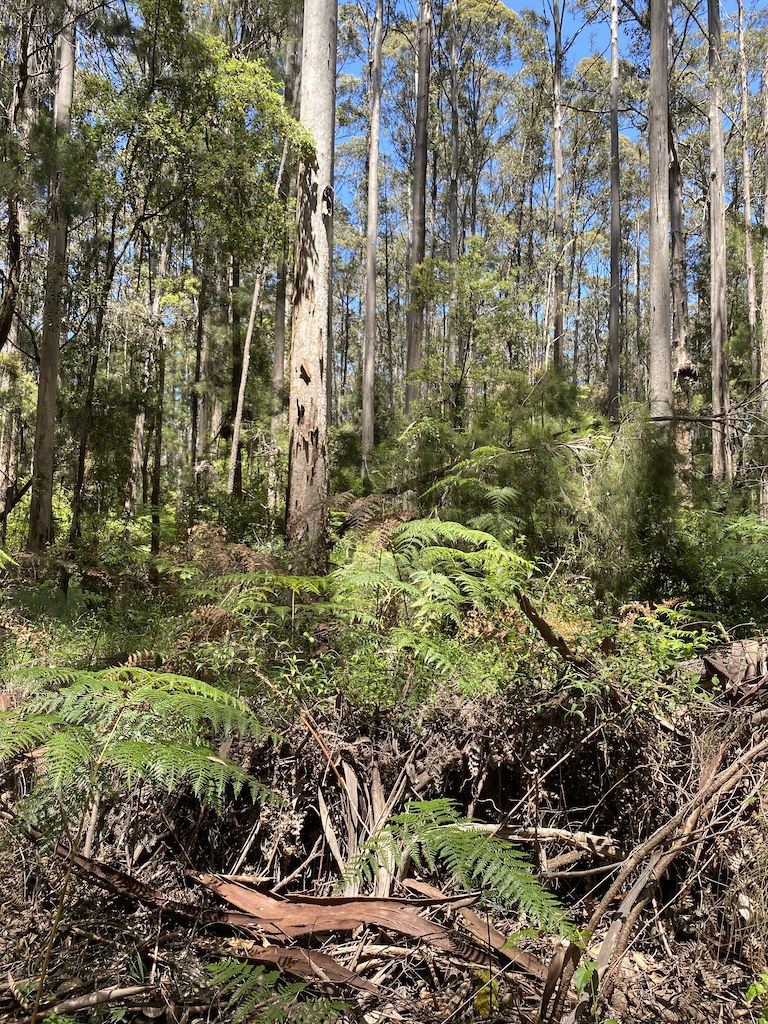
I admit I am a grumpy old man. Nevertheless, four things make me angry.
First: Over the last 15 years the lives and assets and workplaces of the local community have been forsaken. How can any government rest if it has not ensured the highest possible standard of bushfire protection for the lives and well-being of its residents?
Second: Our beautiful forests and farms have become unprotectable. Thanks to the withdrawal of prescribed fire, wildfires are unstoppable under even moderate weather conditions. They take all before them while firefighters wait for the cool change. This is a return to the situation that prevailed in the 1950s!
Third: Our firefighters, many of whom are volunteers, are being asked to do the impossible, to tackle high intensity forest fires in long-unburnt fuels. Deaths and injuries are inevitable. Good men and women will be sacrificed.
Fourth: Multi-millions of dollars are being wasted. How much did the Northcliffe and Boddington fires cost? It would not surprise me to find it is well over a hundred million dollars just for the suppression alone, let alone the costs of recovery and damage and losses to businesses. When that water-bombing helitack flies overhead, think about the fact that it is costing the taxpayer $1 per second, and if it’s the Elvis Skycrane it’s $7 a second. All of this at a time when the government is facing serious budget problems.
Finally, it really angers me that nobody is ever found to be accountable. We have just had the worst bushfires in nearly fifty years, in the face of repeated warnings, and in full knowledge as to how they could have been prevented. Yet no responsibility has been admitted, no proper inquiry has been set up, no heads have rolled.
I am not calling for a witch hunt. But enough is enough! It is time the government faced down those who oppose responsible bushfire management and who are ruthlessly putting our communities and forests at risk. If I was the Premier, I would:
• Tell the greenies to stop whinging about a supposed loss of wildlife from cool burns, while accepting the slaughterhouse of big, hot wildfires. What hyprocrisy!
• Tell the grape growers, sorry mate. You planted your grapes in a bushfire-prone region in the full knowledge that prescribed burning was a routine management practice. Our priority is to protect the community and the state’s assets, not your profits. Get some insurance, as every farmer in the Wheatbelt does.
• Tell the Shires, DFES and DPaW to reset their priorities. To focus on fighting fires after they have started is to attempt the impossible. We want effective programs of fire prevention and fire damage-mitigation, not endless days and weeks of fruitless, dangerous and costly firefighting.
• Tell the public, who are the ones who are suffering, to demand that the authorities get on with the job of protecting lives and the environment from bushfires. No more excuses!
So I call on this meeting to send a strong message to government. The lives of the people of the karri country, and their assets, livelihoods and landscapes, are under threat. This is a direct result of foolish and flawed management. The current approach has not worked, is not working today, and will never work in the future.
Big changes must be made to bushfire policy, personnel and practices and they must be made urgently.
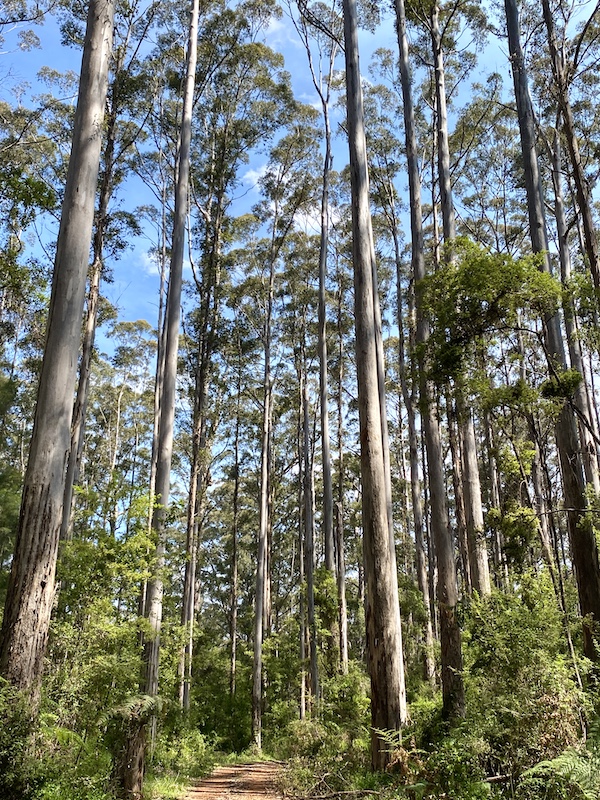
Unfortunately it will fall on deaf ears as state governments are ignorant of facts when presented to them, so the consequences are the forests will burn.
The loss of a major tourist asset of the southwest at Boranup occurred without any comment or inquiry. No public statement of explanation (you could call it accountability if you want). All the wedding parties will just have to go somewhere else for their photos.
It will be of interest to see the level of mortality in this forest.
I walked in it before the fire and found stumps from the last harvest in the mid 1970s. Still solid. No major decay. No charcoal. I wonder if there had been much prescribed burning?
Eucalypt forests drop litter at a rate of around 8 tonnes per hectare. But only 29% of the litter decomposes annually. So it doesn’t take for the litter to build up to levels where bushfires cannot be stopped.
Even WA’s cool burn rate of 10% of WA’s forests is insufficient to keep the litter down to acceptable levels. But Vic and NSW, with their burn rates of less 2%, will always suffer disastrous bushfires, because their forest litter is never kept in check.